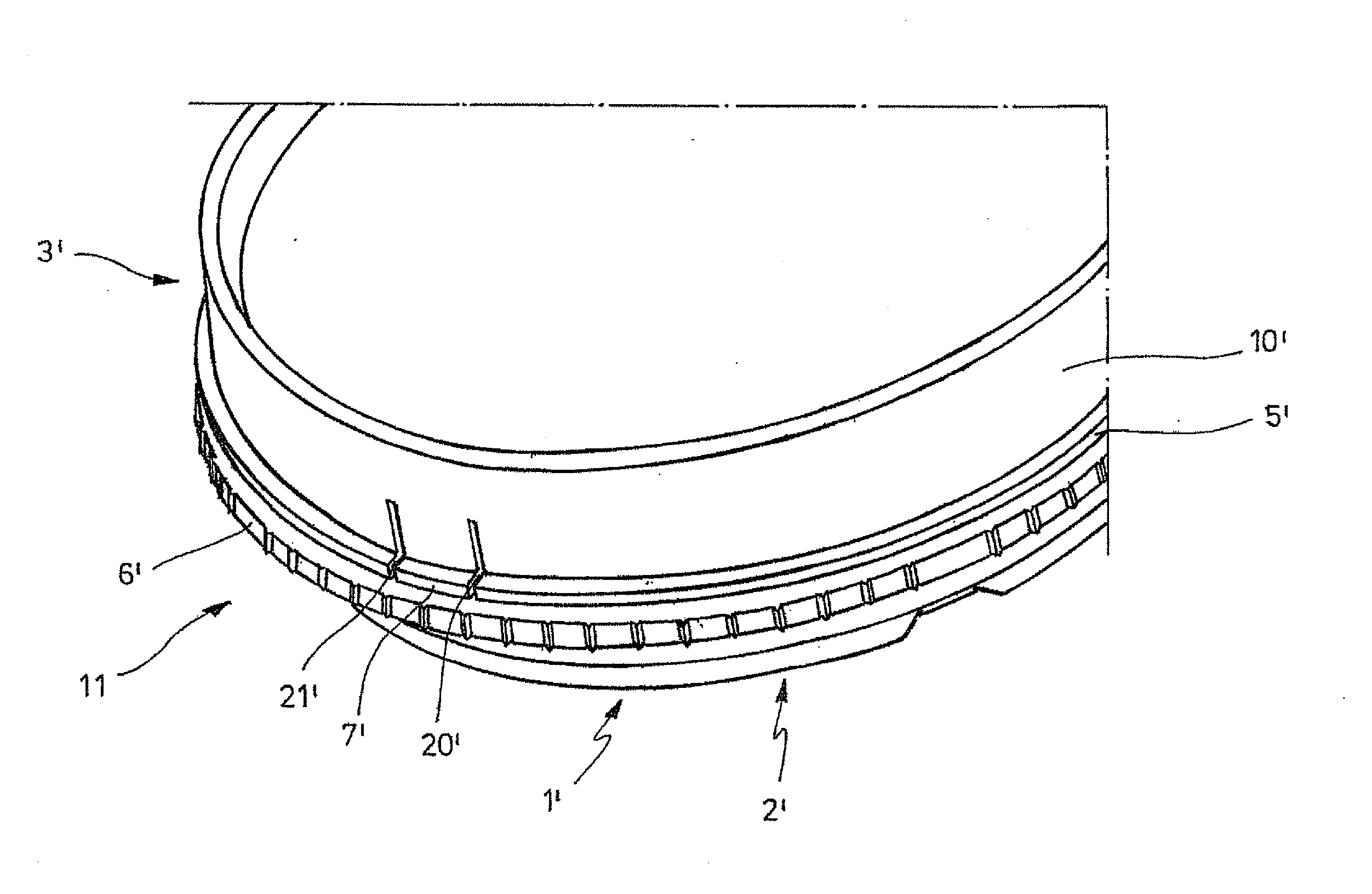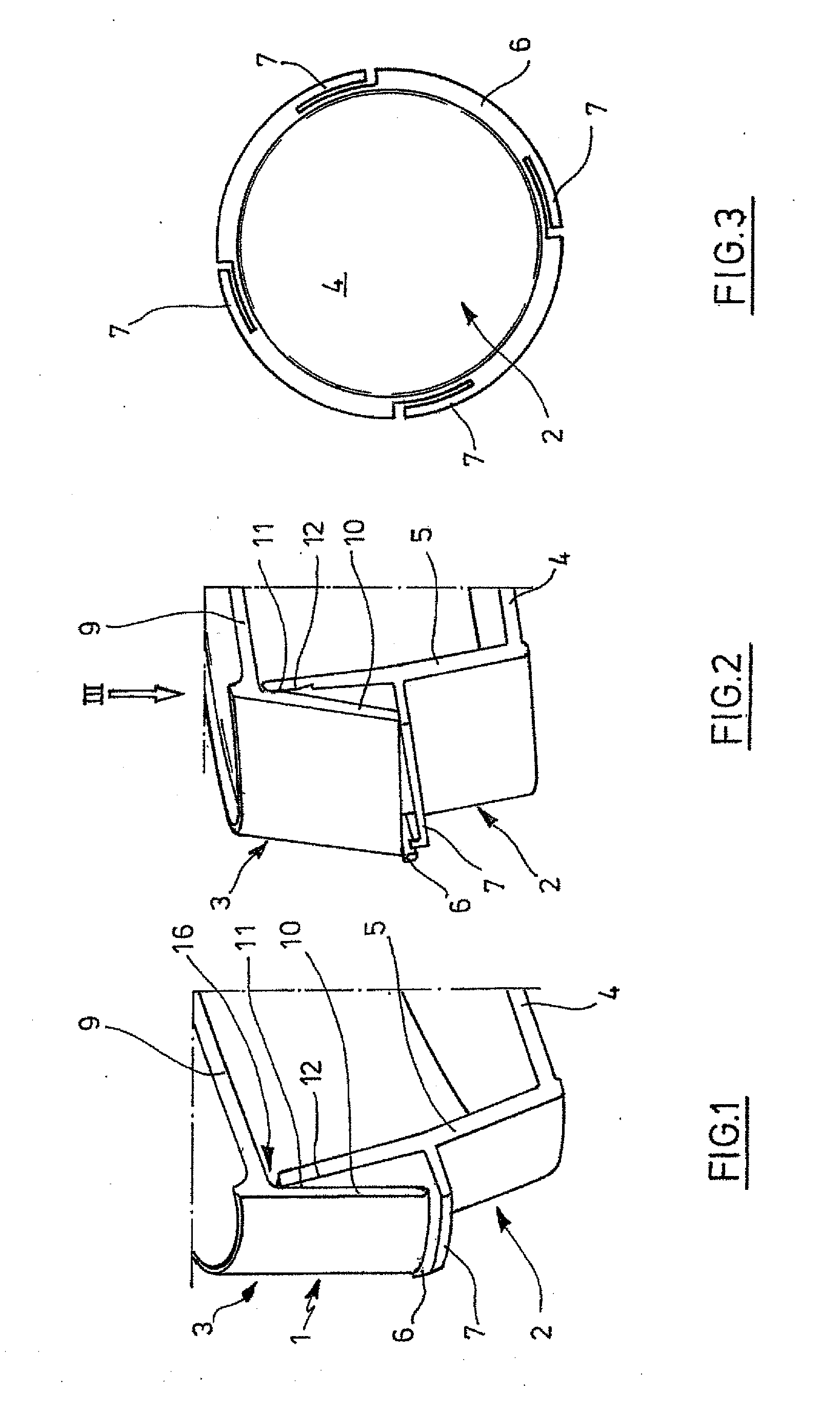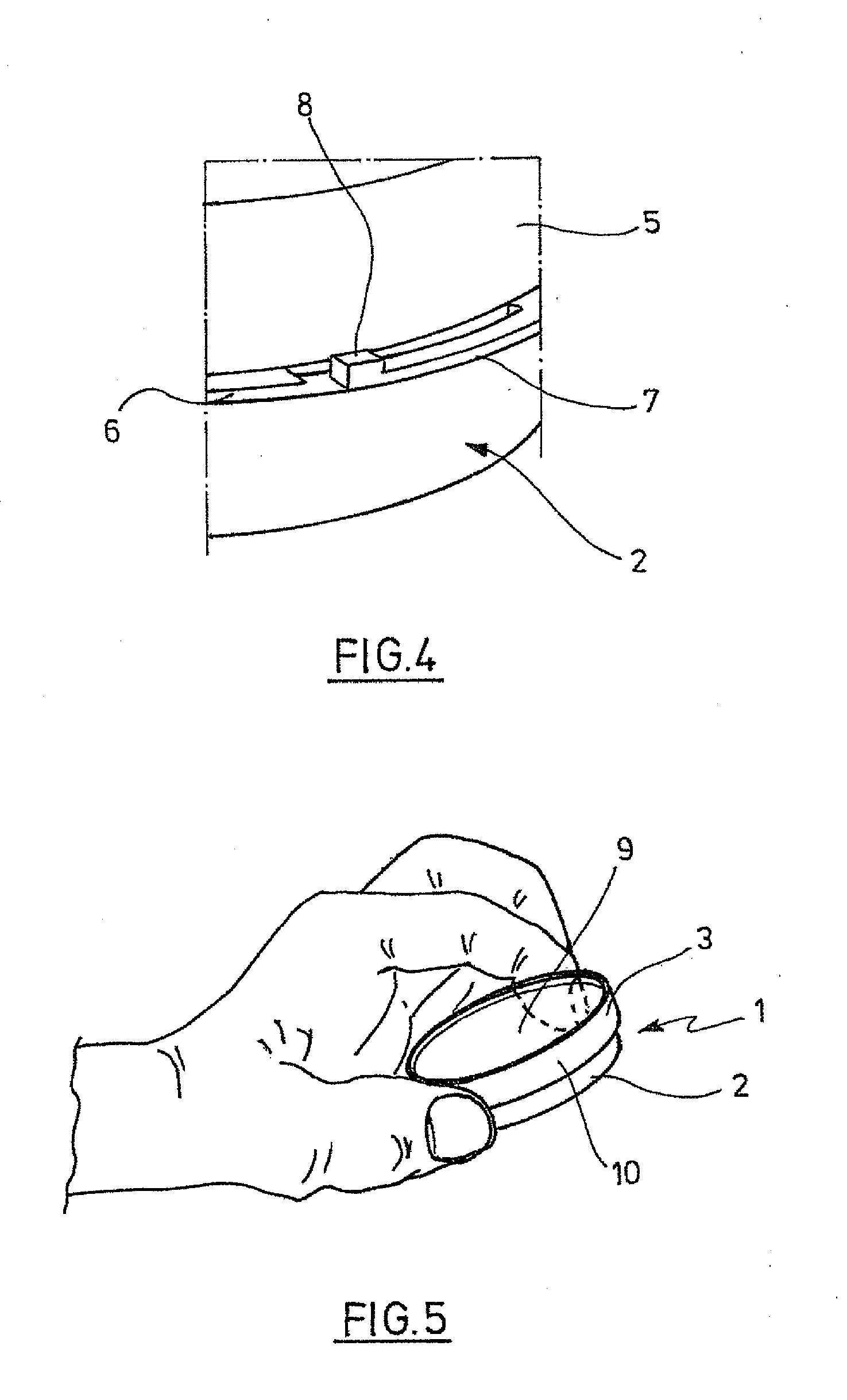Cell Culture Dish
a cell culture and dish technology, applied in the field of cell culture dishes, can solve the problems of increased sterilisation costs, weakened sealing between the lid and the dish, and altered tacky properties of the adhesive, etc., and achieves fast acclimatisation to the atmosphere, facilitates holding or transportation, and facilitates gas exchange
- Summary
- Abstract
- Description
- Claims
- Application Information
AI Technical Summary
Benefits of technology
Problems solved by technology
Method used
Image
Examples
Embodiment Construction
[0052]While this invention may be embodied in many different forms, there are described in detail herein a specific preferred embodiment of the invention. This description is an exemplification of the principles of the invention and is not intended to limit the invention to the particular embodiment illustrated
[0053]In the present application, the designations “up” and “down” refer to an alignment of the cell culture dish wherein the dish rests on a horizontal support with its bottom.
[0054]Same reference signs are used for corresponding features in the explanation of different realisation examples, and different peculiarities of a further realisation example are designated by a superscript (').
[0055]The cell culture dish 1 comprises a dish 2 and a lid 3, each having a circular bottom area. The dish 2 has a bottom wall 4, from which a circumferential side wall stands upwardly.
[0056]An essentially annular circumferential gripping edge 6 projects towards the outside on the outer side o...
PUM
 Login to View More
Login to View More Abstract
Description
Claims
Application Information
 Login to View More
Login to View More - R&D
- Intellectual Property
- Life Sciences
- Materials
- Tech Scout
- Unparalleled Data Quality
- Higher Quality Content
- 60% Fewer Hallucinations
Browse by: Latest US Patents, China's latest patents, Technical Efficacy Thesaurus, Application Domain, Technology Topic, Popular Technical Reports.
© 2025 PatSnap. All rights reserved.Legal|Privacy policy|Modern Slavery Act Transparency Statement|Sitemap|About US| Contact US: help@patsnap.com



